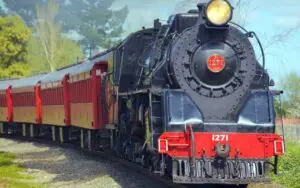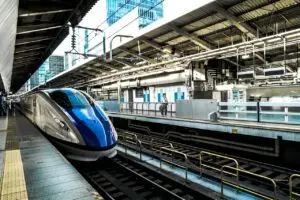Railways

Global Regulations for Occupant Safety in the Railways Industry
The railways industry is a critical component of the global transportation infrastructure. Ensuring the safety of passengers and workers is paramount, and various regulations have been established worldwide to achieve this goal.
International Railway Safety Council
The *International Railway Safety Council* provides safety statistics and insights into the safety measures adopted by railways worldwide. Railways are typically safer than all other transport modes, with the risk of death for a train passenger within the EU being around 0.09 fatalities per billion train kilometers. This is nearly one third that for bus and coach passengers and around 28 times less than for car occupants.

Indian Railways Safety Measures
In India, the *Railway Safety Review Committee* was set up in 1998 under the Chairmanship of Justice H.R. Khanna. The committee made 278 recommendations, of which 240 have been accepted fully or partially. These recommendations include strengthening infrastructure, renewing over-aged assets, and implementing safety enhancement measures.
The Central Government has set up a non-lapsable “Special Railway Safety Fund” of Rs.17,000 crore to wipe out arrears in renewal of over-aged assets of track, bridges, signaling gears, and rolling stock, etc., within a fixed time frame of 6 years.
Health and Safety Laws in the UK
In the UK, rail safety legislation has developed in accordance with EU law. The Office of Rail and Road enforces rail-specific legislation using health and safety powers under the Health and Safety and Work etc. Act 1974. Their role is to deliver advice and enforcement to help ensure the safety of both passengers and workers.
## CENELEC EN 5012X Standards
In the rail industry, the *CENELEC EN 5012X* standards (or the equivalent IEC standards) govern functional safety worldwide. These standards cover RAMS (Reliability, Availability, Maintainability, and Safety), software, and system safety.
In conclusion, ensuring occupant safety in the railways industry is a complex task that requires a comprehensive approach. Various countries and organizations have implemented regulations and standards to ensure safety. These measures, while diverse, share a common goal: to make railways a safe and sustainable form of transport worldwide.
Source:
(1) Safety Statistics – International Railway Safety Council. https://international-railway-safety-council.com/safety-statistics/.
(2) CHAPTER IV SAFETY MEASURES 4 – Indian Railway. https://indianrailways.gov.in/railwayboard/uploads/directorate/safety/downloads/Ch4-eng-0304.pdf.
(3) Railway safety legislation: stakeholder guidance – GOV.UK. https://www.gov.uk/guidance/railway-safety-legislation-stakeholder-guidance.
(4) Health and safety laws | Office of Rail and Road. https://www.orr.gov.uk/guidance-compliance/rail/health-safety/laws.
(5) Functional Safety in the Rail Industry | TÜV SÜD in India. https://www.tuvsud.com/en-in/industries/infrastructure-and-rail/rail/functional-safety-for-rail.
